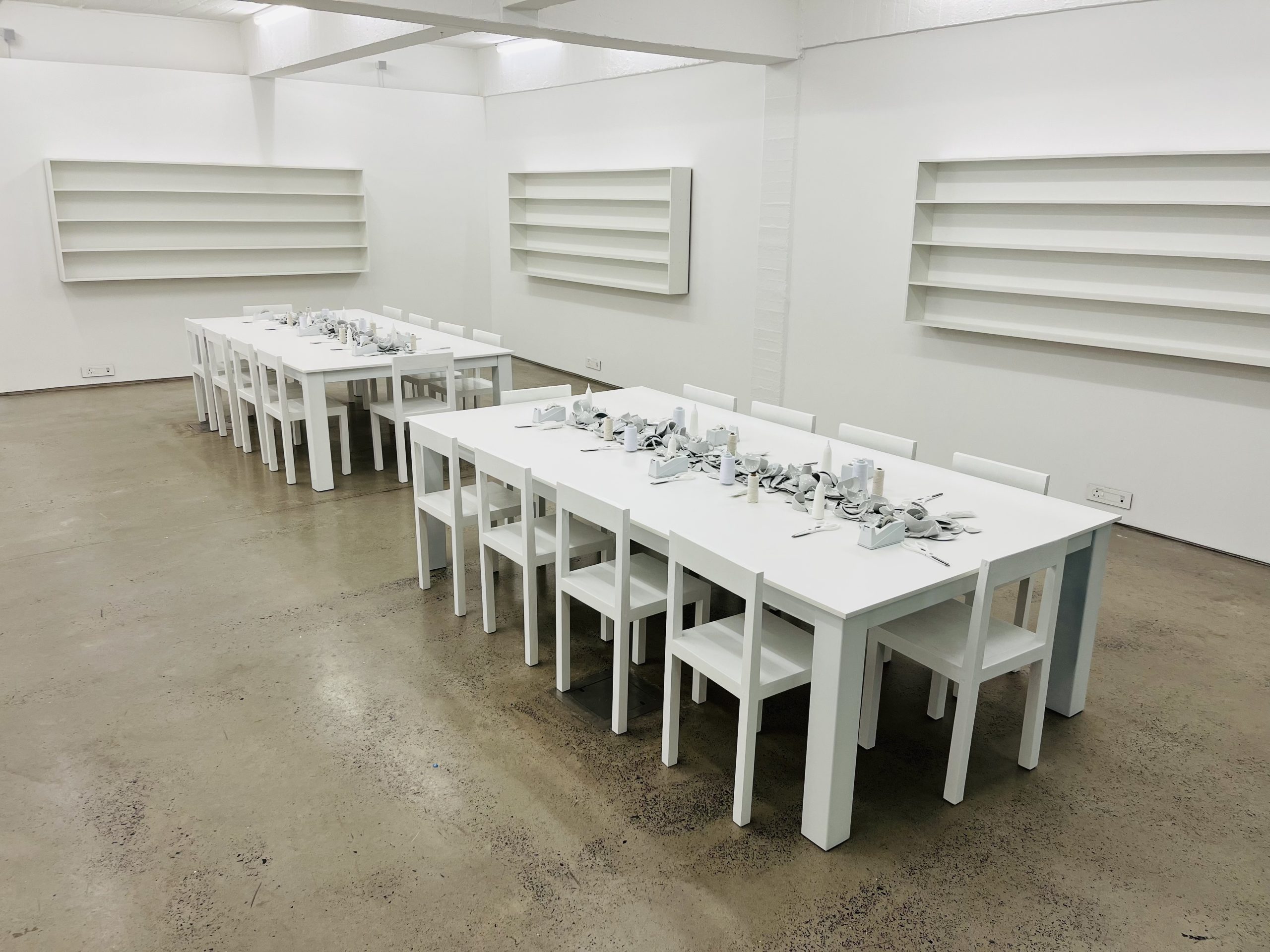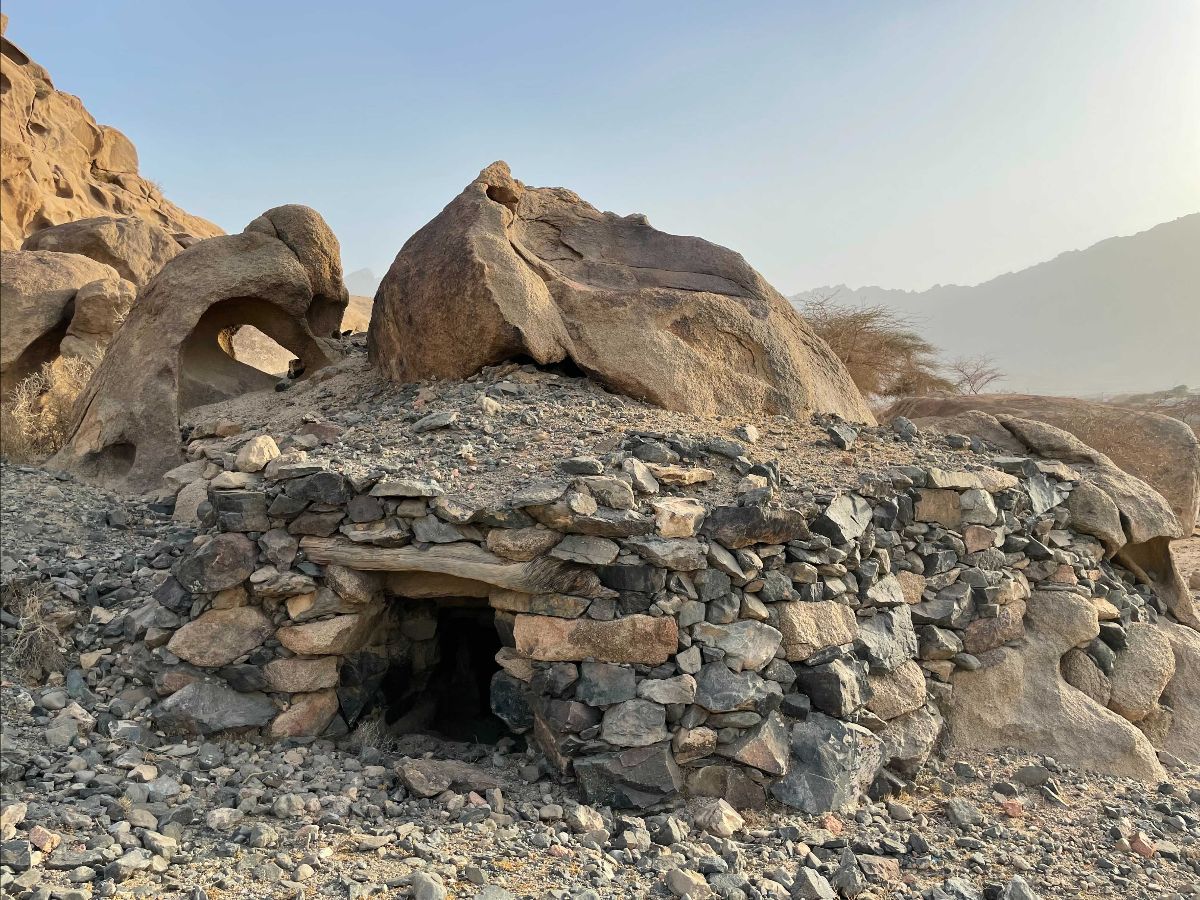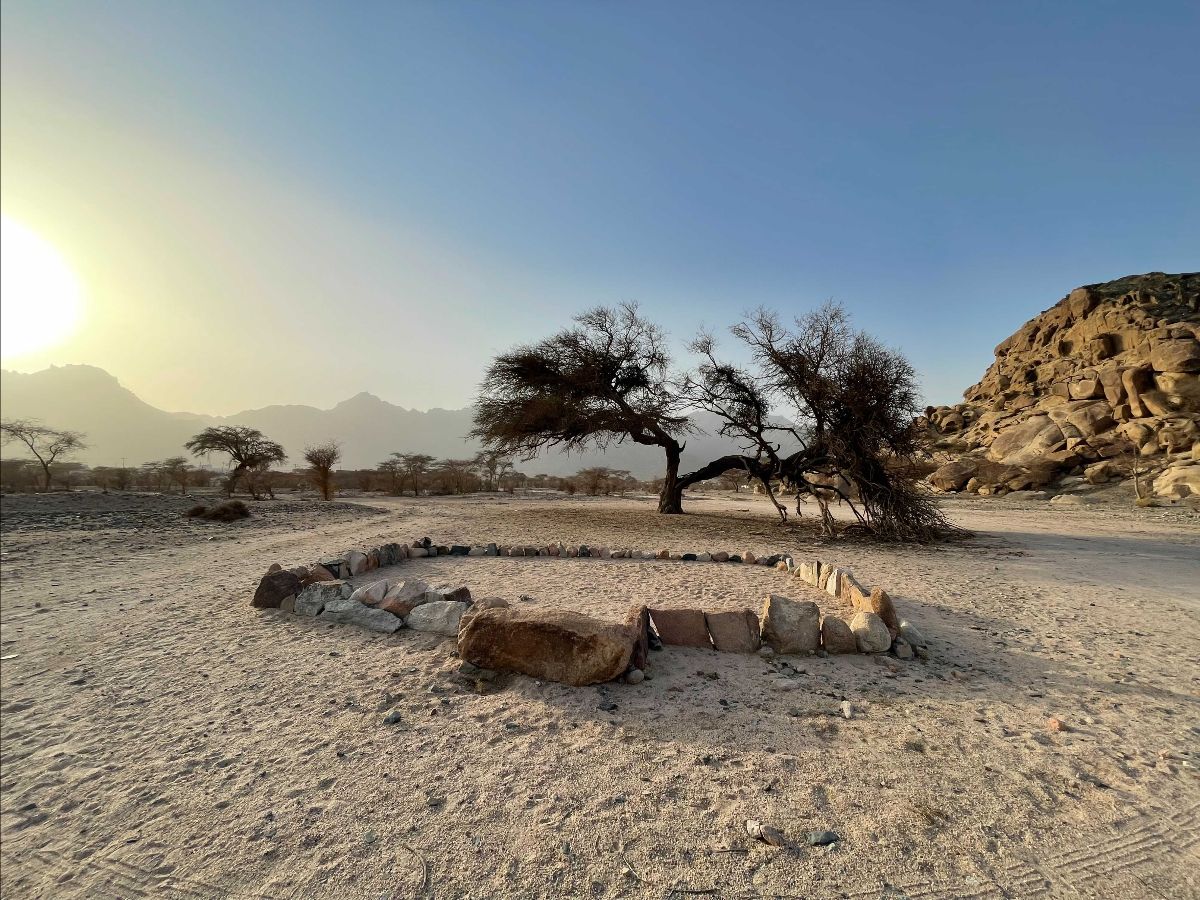There is ‘something’ liberating underscoring our relationship to, and fear of, time. Something co-curator Sumayya Vally describes as a part of the ‘inarticulable’ tether binding the collection that makes up Customs, the latest group exhibition at A4 Gallery, by A4 Arts Foundation. “Not because [the knowledge is] not being articulated,” Vally explains in the show’s supplementary text, “but because their articulations counter dominant bodies of knowledge and categorisation. They offer other entry points to engage, and hold other systems and logics embedded within them.”
Today, where shared life’s simultaneousness can emphasise a chaos and speeding sense of flux which can overwhelm, isolate and untether, this collection of works hone in on ritual; allow for the conflation of ‘inheritance’ with learned behaviour and examine practice as a transmission moving in tandem with time: seeking to preserve instruction, beliefs, information, identities, cultures and traditions.

Photograph by Sumayya Vally

It feels fitting that of this collection, the first to beckon my attention is a video art piece, a medium I tend to gravitate toward, despite/because of our digital age. When it comes to an artwork taking the form of footage, for me, it contains ‘something’ that moves beyond the constant visual engagement. It toys with the viewer’s attention but lives rather in the intention behind what’s drawing the audience’s eye, and how it impresses a stranger’s keener grasp on the notion of ‘time’. I appreciate how such works emphasise the ‘taking’ of time, both in the creation and experience of said work, over and above the gift given to those patient enough to receive it.
The artwork in question, Kapwani Kiwanga’s, Vumbi, 2021, is a 31-minute video titled with the Kiswahili word for ‘dust’, described as a performance of futility. The artist and anthropologist steps into the frame in rural Tanzania and quietly, dutifully dedicates herself to the cleaning of individual leaves soiled by the flurry of dust cast over the environment. “When looking,” Kiwanga speaks of her practice in an extract, “does it simply remind us, or do we see something differently? These moments are reactivated fully knowing that you cannot go back to that time; that time has passed. We can look back and ask, ‘what would have happened if we had embarked on another direction’?”

Yoko Ono, MEND PIECE; 1966/2018

Steve McQueen, Remember Me; 2016 and Igshaan Adams, 65 Bloem Street; 2022.
Dor Guez’s Samira, 2020, is another compelling work investigating time, tradition and identity. The original, damaged photograph of his grandmother, Samira, was found by the artist and then scanned three times, in turn, savouring and enhancing the mesmerising effect of the woman’s direct gaze, as captured on her wedding day. Though the woman is technically obscured by the photograph’s damage, the matriarch remains the axis of this portrait, and the damage seems to be an extension of her position in the frame, resisting complete erasure, aligned also to the artist’s efforts in remembering her and their shared legacy.
Part of the artist’s past is stored in this image: in his matriarch’s eye colour (which Guez inherited as well) and also this, the story of the first wedding in the Church of Saint George in Lydda, Palestine after the war of 1948. Guez continues the conversation hidden in the photograph of his grandmother in another work titled Double Stitch, 2022. “In the town where I grew up, a church and a mosque share a wall,” the artist explains, defining the beginnings of the vinyl installation sprawled across the floor and walls of the gallery. This interpretation of the floor plan for the El-Khidr Mosque and the Orthodox Church is symbolic of what the Foundation describes as “borders and their bleed”, delving into the conversation of “which customs are carried across time when multiple identities tesselate in one terrain”.

Photograph by Sumayya Vally

Photograph by Sumayya Vally
Also included in the multifaceted exhibition are Yoko Ono’s, MEND PIECE, 1966/2018, the first performance of the artwork after it was brought to the city in 2017, encouraging participants to “mend with wisdom/mend with love / mend your heart / it will mend the earth / at the same time”; Moshekwa Langa’s, What is a home without a mother, 2008; Nolan Owald Dennis’s, garden of fanon, 2021 and Options, 2018, among the other thought-provoking, inviting works which speak to an experience Vally refers to as “[one where] there is no separation between the spectacle and the spectator – everyone is involved.”
Customs as a title employs not only a sense of history but also one of connection which stands apart from the contemporary –even technological– connotation of the word. Language is such that memory and time are crucial fixtures when discerning meaning, and when considering what a ‘custom’ is to us, or what we are ‘accustomed to’ our identities and understandings of ourselves, our families and our sense of reality emerge. Here also, as is evidenced by the show’s multi-medium presentation, our legacies are not only stored but shared and sent forth to carry to the future that which we demand must survive the past.
Customs will be in A4’s Gallery until 24 September 2022.

Objects made by visitors to A4 who participated in Yoko Ono’s MEND PIECE in 2017



















































